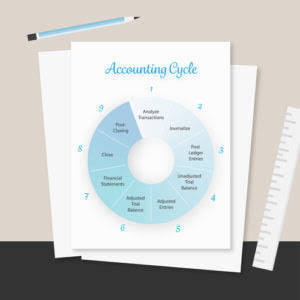Trade Payables What Are They, Vs Trade Receivables
08/07/2024 17:31

This allows the retailer to sell goods and collect cash from customers well before the payment to suppliers is due, effectively using the trade payables as an interest-free loan to fund operations. However, if the retailer fails to retained earnings manage this process effectively, it could lead to a cash crunch when suppliers demand payment. Trade payables, when managed wisely, can be a strategic tool for businesses to maintain liquidity, strengthen supplier relationships, and enhance overall financial strategy.
Journal entry for trade payable
For a procurement officer, they represent a negotiation tool with suppliers to secure the best possible terms. Meanwhile, a financial analyst might view trade payables as an indicator of a company’s short-term financial stability and its ability to meet obligations without compromising cash reserves. While trade payables represent amounts a company owes, trade receivables are amounts owed to the company by its customers. Efficient management ensures that the company can meet its obligations without compromising its financial position. You get what you need today and pay later, usually within 30, 60, or 90 days.
- These short-term obligations are recorded in a company’s financial books.
- By staggering payment dates, a company can avoid large outflows of cash at any one time, smoothing out the cash flow cycle and ensuring that there are sufficient funds to cover operational expenses.
- A common example of a trade payable is when a business purchases goods, such as raw materials or office supplies, on credit from a supplier.
- The accounts payable turnover ratio of a company is often driven by the credit terms of its suppliers.
Trade Payables: Definition, Benefits, Tips, and Examples for Business

The period allowed for credit depends on the relationship between the buyer and seller of goods or services. In some cases, cost of goods sold (COGS) is used in the numerator in place of net credit purchases. Average accounts payable is the trade payables sum of accounts payable at the beginning and end of an accounting period, divided by 2.
- They represent short-term debts since they have to be settled within one operating cycle of the business.
- Contract management and negotiations are also critical when managing payables.
- The bookkeeping entry to record a supplier invoice is to debit the purchases or expense account and credit the account payable account.
- Company A reported annual purchases on credit of $123,555 and returns of $10,000 during the year ended December 31, 2017.
Cash Application Management

The accounts payable turnover ratio indicates to creditors the short-term liquidity and, to that extent, the creditworthiness of the company. A high ratio indicates prompt payment is being made to suppliers for purchases on credit. Trade payables are calculated by adding all the unpaid and outstanding invoices and bills from suppliers that a company owes as of a certain date.
- For publicly listed companies, they have to clearly break down other payables in their quarterly and annual filings.
- If that was the only outstanding invoice, the balance would be reduced to zero.
- While trade payables support business growth, they also present risks if not managed carefully.
- All accounts payable are actually a type of accrual, but not all accruals are accounts payable.
- Managing both these functions are therefore essential for the health of your company.
- To simplify the miscellaneous trade and non-trade payables of the large-sized companies, the term “Other payables” has been established to represent all the small items of trade and non-trade payables.
Company Overview
Trade Payables specifically refer to money owed for goods and services that help run the business. On the other hand, Accounts Payable includes all short-term liabilities, not just those related to trade. This means they can cover other expenses like rent, utilities, or office supplies. Confirm balances with vendors – For large or long-outstanding payables, contact vendors to verify what’s owed.

Monitor Accounts

All accounts payable are actually https://mpkcomposite.com/a-guide-to-ecommerce-bookkeeping-for-business/ a type of accrual, but not all accruals are accounts payable. If for example, purchases are made on credit from Supplier A for 500 and Supplier B for 800 the first entry would be to the purchases day book to record the purchases. Leverage early payment discounts – Take advantage of vendor incentives while balancing liquidity.
- It might be that the company has successfully managed to negotiate better payment terms which allow it to make payments less frequently, without any penalty.
- Accounts receivable is money coming in while accounts payable is money going out.
- You get to choose when the money goes out, giving you the flexibility to pay when you have cash on hand—so long as it aligns with your payment terms.
- AP represents all short-term debts your business needs to pay for general operations.
- These technological advancements are not just about efficiency; they represent a strategic shift in how businesses manage their finances.
Discrepancies can arise from various issues such as unrecorded invoices, duplicate payments, or incorrect amounts. Regular reconciliation helps in identifying errors or fraudulent activities early, thus safeguarding the company’s assets. It also ensures that the financial statements are accurate, which is critical for internal decision-making and external reporting. A well-managed reconciliation process can enhance a company’s credit rating by demonstrating its reliability in settling trade payables in a timely manner.










